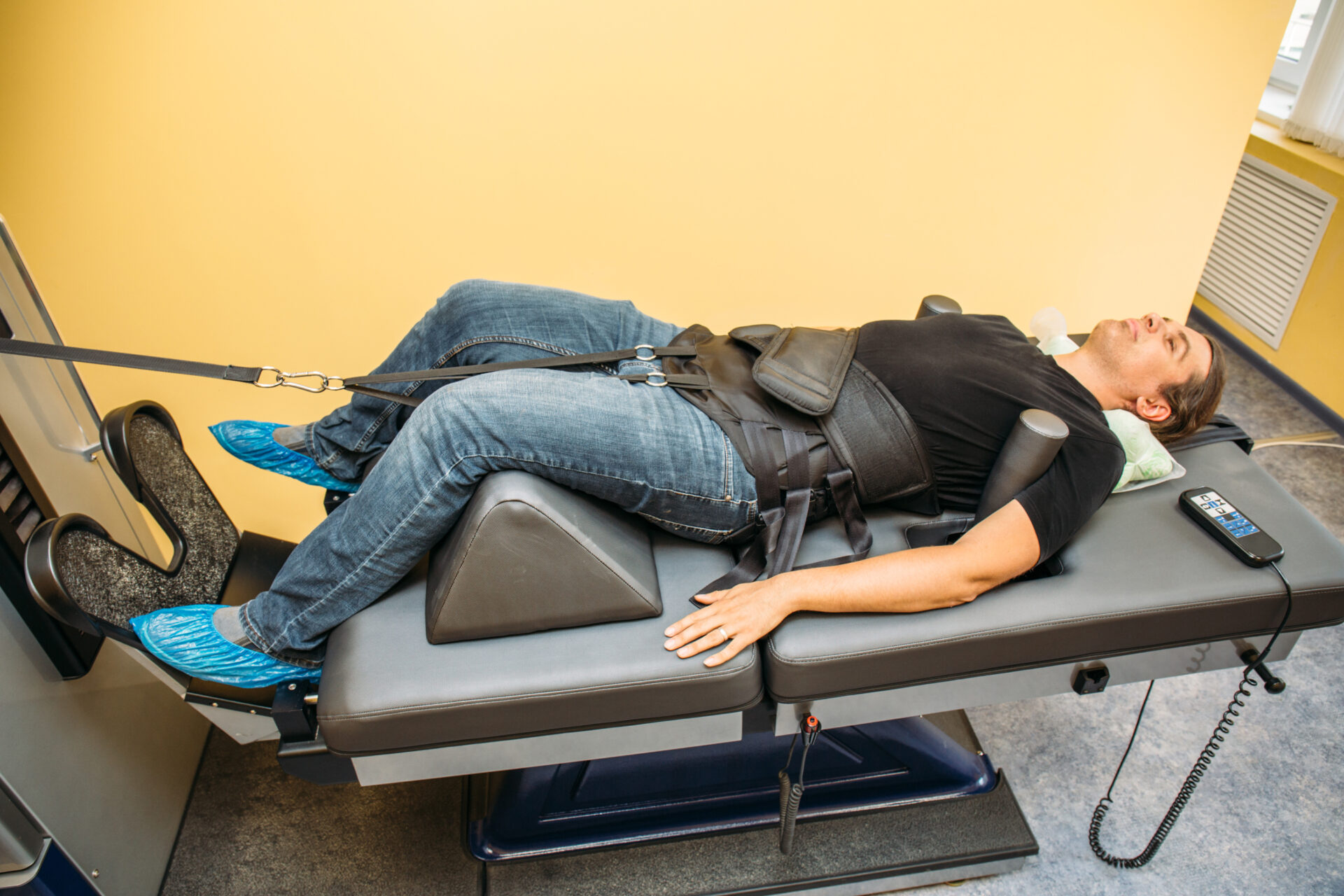This post may contain affiliate links, which means if you enroll through my link, I’ll receive a small commission at no extra cost to you.

Knee pain can be debilitating, affecting not only our mobility but also our overall quality of life. When conservative treatments fail to provide relief, knee replacement surgery may be an option. It’s essential to understand the procedure, its benefits, risks, and financial implications, as well as possible alternatives. This comprehensive guide will help you navigate the world of knee replacement surgery and make informed decisions about your health and well-being.
In this blog post, we’ll cover everything you need to know about knee replacement surgery, from understanding the knee joint’s anatomy and causes of knee pain to the surgical procedure and recovery process. We’ll also discuss the costs associated with knee replacement surgery and explore alternative treatments for those not yet ready to undergo surgery.
Short Summary
- Knee replacement surgery is a procedure to replace damaged parts of the knee joint with artificial implants.
- Total and partial knee replacements are available, depending on the extent of damage.
- Alternatives such as medications, physical therapy and assistive devices should be explored before considering surgery. Costs can vary significantly without insurance coverage.
Understanding Knee Replacement Surgery
Knee replacement surgery, also known as knee arthroplasty, involves replacing damaged parts of the knee joint with artificial implants made of metal and plastic. This surgical procedure is primarily considered for individuals suffering from severe arthritis, disability, or knee injury. Most patients who undergo knee replacement surgery report decreased or eliminated knee pain, increased mobility, and an overall improvement in their quality of life.
There are two primary types of knee replacement surgery: total knee replacement and partial knee replacement. These procedures address different needs and are suitable for patients with varying degrees of knee damage.
Let’s dive deeper into the specifics of each type of knee replacement surgery.
Total Knee Replacement
Total knee replacement is a surgical procedure that replaces damaged parts of the knee joint with metal and plastic implants. The surgeon removes cartilage and some bone from the upper part of the tibia (shin bone) and lower sections of the femur (thigh bone) and caps them with metal implants, forming new surfaces for the joint.
The evaluation process for total knee replacement involves a comprehensive examination by an orthopedic surgeon, who will discuss potential risks, complications, and other treatment options.
The recovery process after total knee replacement surgery varies for each patient, but most report significant pain reduction and improved mobility. It’s essential to follow your surgeon’s advice and engage in physical therapy to regain strength and flexibility in your knee.
Although total knee replacement may not enable you to do more than you could before developing arthritis, it can significantly improve your daily activities and quality of life.
Partial Knee Replacement
Partial knee replacement is an alternative to total knee replacement for individuals experiencing arthritis in only one compartment of the knee joint. This procedure involves removing damaged cartilage and bone in the affected compartment and replacing it with implants, while leaving healthy knee components intact.
This type of surgery is suitable for patients with arthritis limited to a single compartment of the knee and may provide relief for those who cannot undergo total knee replacement due to certain medical conditions. By targeting only the damaged area, partial knee replacement can offer a quicker recovery and less postoperative pain compared to total knee replacement.
Anatomy of the Knee Joint
The knee joint is a complex structure, comprising three bones: the femur (thigh bone), tibia (shin bone), and patella (kneecap). These bones are covered with articular cartilage, which protects the bones and facilitates smooth movement within the joint. In addition to the bones, the knee joint contains menisci, which act as shock absorbers between the femur and tibia, as well as large ligaments that provide stability and strength to the joint.
All remaining surfaces of the knee are covered by a thin lining called the synovial membrane, which releases fluid to lubricate the cartilage and reduce friction, ensuring smooth joint movement in a healthy knee.
Understanding the anatomy of the knee joint is essential when considering knee replacement surgery, as it provides insight into the complexity of the procedure and the importance of proper recovery and rehabilitation.
Causes of Knee Pain and Damage
Knee pain and damage can result from various factors, with arthritis being one of the most common causes. Arthritis can affect the knee joint in several ways. Three types are especially common: osteoarthritis, rheumatoid arthritis, and posttraumatic arthritis. They can cause pain and disability. Osteoarthritis occurs when the cartilage that cushions the knee joint degrades or wears away completely, causing the bones to rub together and become inflamed. This inflammation leads to pain and stiffness, making walking and other movements difficult.
Rheumatoid arthritis, on the other hand, is characterized by inflammation of the synovial membrane, resulting in an excess of synovial fluid, which can cause pain and stiffness in the knee joint.
In addition to arthritis, knee injuries can also cause pain and damage, potentially necessitating knee replacement surgery.
Determining the Need for Knee Replacement Surgery
Before considering knee replacement surgery, a thorough evaluation process is necessary. This process includes a physical examination, a review of your medical history, and imaging tests. An orthopedic surgeon will assess the severity of your knee pain and damage, and discuss other treatment options before recommending surgery.
It’s essential to carefully weigh the potential benefits and risks of knee replacement surgery, and to exhaust all conservative treatment options before deciding on this procedure. Should you decide to pursue surgery, finding a skilled knee surgeon is crucial to ensure the best possible outcome.
Preparing for Your Knee Replacement Surgery
Once you and your healthcare provider have decided that knee replacement surgery is the right choice for you, it’s essential to prepare for the procedure. This preparation includes a thorough explanation of the surgery, signing a consent form, notifying your surgeon of any medications or allergies, and attending pre-operative education sessions. These steps will help you understand what to expect during and after the surgery, and ensure you’re informed about potential complications and postoperative care.
Additionally, you may need to undergo a complete physical examination and certain tests, such as blood and urine samples or an electrocardiogram, before your surgery. Following your surgeon’s and physical therapist’s instructions will help ensure a successful surgical outcome and smooth recovery.
The Knee Replacement Procedure
Knee replacement surgery typically takes 1 to 2 hours and is performed under general anesthesia. The surgical process consists of four basic steps: anesthesia, cleansing, incision, and removal of damaged surfaces, followed by the installation of a prosthesis. The surgeon will make an incision in your knee, move the patella to the side, and remove the damaged cartilage and bone. Then, the artificial joint will be attached to the bone, creating a new surface for the joint.
The actual surgical procedure is just one part of the knee replacement journey. Recovery and rehabilitation are equally important aspects that require dedication and commitment from the patient to achieve the best possible outcome.
Recovery and Rehabilitation
Recovery and rehabilitation following knee replacement surgery begin within 24 hours of the procedure. During this stage, physical therapy and gentle exercises are crucial to improve range of motion and muscle strength in the knee joint. It’s essential to follow your physical therapist’s guidance and adhere to the prescribed exercise regimen to optimize your recovery.
In addition to physical therapy, measures to prevent blood clots are implemented, such as wearing support hoses, using compression boots, and taking blood-thinning medications. Following your healthcare provider’s instructions and participating in the recovery process will help you regain mobility and return to your normal activities as quickly and safely as possible.
Potential Risks and Complications
As with any surgical procedure, knee replacement surgery carries potential risks and complications. These may include bleeding, infection, blood clots, and the possibility of continued pain or stiffness. It’s crucial to discuss these risks with your surgeon and weigh them against the potential benefits of the surgery.
While complications are rare and knee replacement surgery is generally considered a safe procedure, it’s essential to be educated and prepared for any potential issues that may arise. By understanding the risks and following your healthcare provider’s guidance, you can reduce the likelihood of complications and ensure the best possible outcome from your surgery.
Life After Knee Replacement
Life after knee replacement surgery requires patience and commitment to the recovery process. Patients can typically expect to resume driving within 4 to 6 weeks after surgery, and most normal activities can be resumed within 3 to 6 weeks. It could take up to four months or more for a full recovery and return to strength and mobility. However, this timeline highly depends on the individual and their current health condition.
While knee replacement surgery can significantly improve your quality of life, it’s important to remember that it may not restore the same level of function you had before developing knee arthritis or injury. By following your healthcare provider’s guidance and participating in the recovery process, you can maximize the benefits of your knee replacement surgery and enjoy a more active and pain-free life.
Cost of Knee Replacement Surgery
The cost of knee replacement surgery varies depending on factors such as location and the presence of health insurance. The average cost of total knee replacement surgery in the US is estimated to be $32,570. Without insurance, the cost can be even higher, reaching $35,000 or more.
It’s essential to consider the financial implications of knee replacement surgery, as well as the potential benefits and risks, when deciding whether the procedure is right for you. By understanding the costs involved and exploring options for financial assistance, such as health insurance or medical loans, you can make an informed decision about your healthcare and well-being.
Alternatives to Knee Replacement Surgery
Before considering knee replacement surgery, it’s essential to explore all available non-surgical treatment options and seek a second opinion or alternative treatments. Some nonsurgical treatments for knee pain include medications, physical therapy, weight loss, and the use of assistive devices such as braces or canes. These treatments aim to decrease knee pain, inflammation, and restore range of motion before resorting to surgery.
If you’re unsure whether knee replacement surgery is the right choice for you, discuss your concerns with your healthcare provider and explore all available treatment options. Surgery should be considered as a last resort when conservative treatments have not provided sufficient relief, and the patient is experiencing significant pain and instability.
Summary
In conclusion, knee replacement surgery is a complex procedure that can significantly improve the quality of life for patients experiencing severe knee pain and disability. Understanding the anatomy of the knee joint, the causes of knee pain, and the surgical procedure and recovery process is essential for making informed decisions about your health and well-being.
Before considering knee replacement surgery, it’s crucial to explore all available non-surgical treatment options and seek a second opinion or alternative treatments. By understanding the potential risks, costs, and benefits of knee replacement surgery, you can make the best possible decision for your unique situation and enjoy a more active and pain-free life.
Frequently Asked Questions
How long does it take to recover from a knee replacement?
Recovering from a knee replacement usually takes two to three months. The majority of patients are able to start walking without the aid of assistive devices within three to six weeks, and then gradually regain their normal levels of activity over the course of time.
With commitment to physical therapy and proper care, you can expect a successful recovery.
How long does it take to walk after a full knee replacement?
With appropriate care and rehabilitation, most people who have had a total knee replacement are able to walk without assistance around four to eight weeks after the procedure. After two months, you can likely start enjoying low-impact physical activities again.
With time and effort, you will be able to walk longer distances and even return to more intense activities.
Is a knee replacement considered a major operation?
Yes, a knee replacement is considered a major operation. It is a significant procedure that requires anesthesia and is typically only recommended as a last resort after other treatments have failed.
How painful is a total knee replacement?
A total knee replacement is typically a very painful experience; however, the exact amount of pain varies significantly depending on the individual. While many people experience severe discomfort during the first few days following surgery, it usually decreases as time passes and with proper pain management.
Overall, a total knee replacement can be a painful experience, especially in the first few days after surgery. Pain levels vary for each individual, but with adequate pain medication and time, the discomfort should begin to decrease.
What is the average cost of a total knee replacement?
The average cost of a total knee replacement in the United States is around $30,000 – $50,000, with most patients paying between $15,000 and $35,000.
Your health insurance coverage level and where you live can significantly affect the cost of your surgery.






Leave a Reply